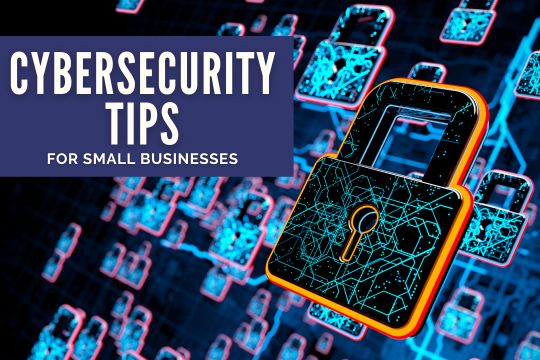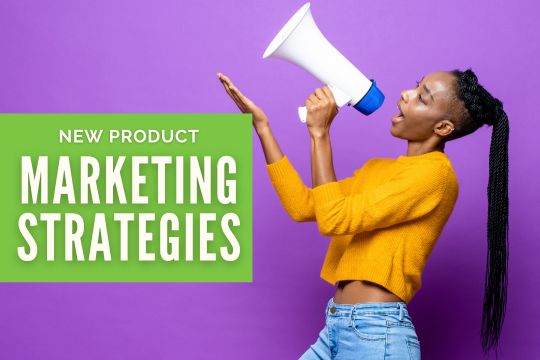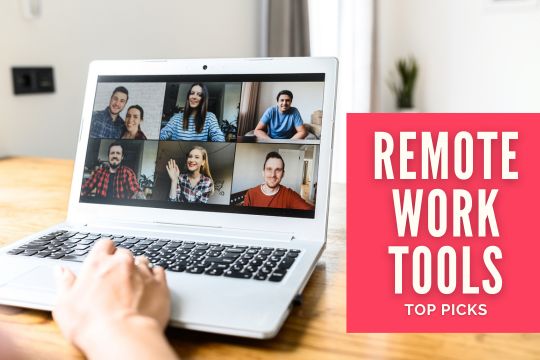When you market your products online, you're not just announcing your arrival. You're showing buyers how your items beat the competition, satisfy their needs and resolve problems that they didn't know they had. Since people are hesitant to try new businesses, you'll need a strong start that makes headlines and earns five-star reviews.
Marketing drives the entire sales process lead to close. Even the checkout process gives you a final chance to add value. Once you've mastered marketing at every level, your small business could become a nationwide operation
Offer Freebies

Makeup companies often send free samples with every order. Freebies introduce customers to new products to order, but they also entice people to buy more. Shoppers love opening packages with several miniature products--and the more they buy, the more they get. Plus, samples are convenient for travel use.
For these reasons, freebies increase buyer satisfaction. You can let shoppers choose freebies when they check out, choose products for them or slip in a sample as a surprise. Small businesses that hand-package their orders often slip in handwritten thank-you notes. You don't have to write a full letter; a short message and signature will make your customers smile.
Build a Rewards Program
Many customers enjoy your products but can make similar purchases from a competitor with a slight advantage, such as a closer location or bigger sales selection. Loyalty programs ensnare shoppers who would have otherwise left. Suddenly, they have a reason to keep shopping with you: they earn points whenever they place an order.
Points have an exchange rate, such as 100 points equalling $1. Once they've earned enough, customers cash in their points for discounts on their orders. Shopping is the best way to earn points, but buyers can earn points when they complete other tasks, such as leaving a review, celebrating their birthday or sharing your link on Twitter.
With a referral program, buyers rack up more points and direct new shoppers to your website. Give each customer a unique code. When they share a code with their friend, they'll earn points when the friend signs up and places their first order. You could also give the friend a small discount.
Send Email Reminders

Email newsletters send repeat marketing directly to your subscribers' inboxes. Even if they don't open the emails, seeing your name reinforces brand recognition. When they do read your newsletters, they find updates, promotions, life tips and deals exclusively for them. Strong headlines, such as "Shop now for 60% off!", grab their attention.
Many businesses offer newsletters but don't know about another technique: securing repeat customers. When a shopper abandons their cart, you can send a follow-up email inviting them to complete the purchase. Offering a discount entices them to come back. Likewise, you can reach out after a first purchase, offering another discount and highlighting your latest sales.
If someone hasn't visited your site for a while, send them another offer or invite them to take a survey to see where you can improve. You'll make your brand fresh in their minds again, and they might have suggestions for retaining more buyers.
Text Your Customers
Emails can slide unnoticed into the "Promotions" folder, but text messages appear directly in the recipient's notifications. You can grab their attention immediately, then convince them to shop with a link or promo code. Text messages can also confirm orders and offer customer service for the buyer's convenience.
To collect numbers, invite visitors to sign up for text messages on your website or during checkout. Consider offering a discount to entice more people. Just make sure that your program allows them to opt-out at any time--otherwise, they'll get frustrated and block you. Similarly, limit your texts to important announcements, such as Cyber Monday sales.
Schedule Product Drops
Launching products on a consistent schedule builds anticipation that you won't earn with randomized drops. For example, you could always release products at 10 A.M. on Wednesday or the first day of the month. Your fans know what to expect and count down the dates until they can start browsing. Make sure you boost their anticipation with website countdowns and social media posts.
Provide Free Shipping
Online memes joke about the fact that people will cancel a $30 purchase with a $20 shipping fee but happily place a $50 order with free shipping. However, this behavior actually makes sense. Both purchases cost the same amount, but one provides $50 worth of products instead of $30. This logic drives people to stock their carts until they reach the "free shipping" threshold.
Offer free shipping when customers reach a limit, such as $50 or $100, before taxes and after discounts. Throughout the year, you can market your products online with the occasional promotion that gives everyone free shipping. Some businesses also waive shipping costs on high-ticket items.
Install Chatbots

Your marketing led a visitor to your online store. They're interested in your wares, but they have questions that the product descriptions don't answer. A quick Google search doesn't help them, and they don't feel like waiting for an email response or sifting through your FAQ page. As a result, the customer leaves without buying anything.
Chatbots grab customers that you might've lost otherwise. When they enter your site, the bot greets them and invites them to ask questions. Visitors can click the icon without leaving their current page and get responses in seconds. Bots can even boost sales by recommending products or offering discount codes.
New businesses typically use automated chatbots that pull responses from your FAQ. When your budget increases, you can invest in live chat platforms with real agents. Talking to real people increases customer satisfaction because they receive quick answers without going around in circles.
Suggest Products During Checkout
Grocery stores surround their registers with magazines, snacks and gadgets to capture impulse buys. Snag these same purchases by adding products to checkout pages. When customers review their orders, they see a category of items that they can add to their purchase with a single click. These items could be listed on their wishlist, related to products in their cart or popular among other shoppers.
Similarly, encourage customers to buy more by reminding them that they're close to a deal. The checkout page could state "Add only $14.59 to get free shipping" or "You're $3.67 away from doubling your free samples!" Customers will add more items to their baskets, thinking that the savings make them practically free.
Offer Subscription Services
Subscription services create repeat customers with a single purchase. If you have a diverse product range, you can sell subscription boxes with new items every month. Other businesses opt for single-item subscriptions. When customers sign up, they receive the same product every month so that they never run out. This is particularly effective for items that need refills, such as skincare products.
Allow customers to buy once or sign up for a recurring delivery at a discount. You'll charge them and ship the product according to their schedule. Theoretically, customers could make a purchase every month without ever visiting your site again. Still, make sure that they can pause or cancel their subscription at any time if their needs change.
Engage in Influencer Marketing

Influencer marketing introduces your brand to a wider audience. Paid advertisements help you succeed, but influencer marketing is more subtle. People scroll past advertisements, but they stop to read a post from their favorite creator. They also take influencers' opinions seriously, wanting to emulate them in real life. After all, people call them "influencers" because they influence society's trends.
However, creators come with a price. If you're just starting out, look for micro-influencers with fewer than 100,000 followers. Smaller followings usually mean lower prices, but do some research to make sure that your creator is trustworthy. Afterward, reach out to discuss your collaboration.
You can pay for an advertisement or send the creator free products. After discussing a schedule and ad content, the influencer will promote your business. Popular ideas include:
- Videos of the influencer using your product
- "Before" and "after" pictures that showcase the benefits
- Shoutouts in their regular content, thanking you for sponsoring them
- Announcements about their new position as a brand ambassador
- Invitations for followers to place an order with a special discount code
- Guest posts on your social media profiles
Once your business takes off, consider accepting applications for brand ambassadors. Influencers will approach you so that they can earn free products and work with a respected brand.
Start Affiliate Marketing
Content creators turn to affiliate marketing for passive income. After partnering with your business, they place ads or links to product pages on their website. Sometimes, they write blog posts inviting their readers to try certain products. When a visitor clicks a link and makes a purchase, the affiliate receives a commission fee.
An affiliate marketing program helps you reach a virtually unlimited audience. Any qualifying creator can sign up, and while they'll take a small fee, you only pay when someone makes a purchase. This method appeals to more creators because they don't have to endorse your business--they can simply share advertisements without comment.
Be Authoritative

You're not just selling a product: you're positioning yourself as an industry leader. Customers want to know that you source quality materials, hire expert craftsmen or operate in sustainable factories, diligently test your products and sell only the best. As a result, you'll need vibrant descriptions that showcase your expertise.
For example, a hot sauce manufacturer could highlight these facts:
- Every sauce is 100% organic. We make our sauces from peppers, vegetables, seasoning and nothing else. No artificial flavors or preservatives; just a naturally spicy kick.
- We buy hot peppers directly from the source, supporting local farmers and maximizing quality control.
- Our hot sauce experts test every product to ensure that it adds flavorful heat to your wings, dips and burgers.
Instead of just listing the ingredients, the manufacturer uses words and phrases, such as "100% organic," "no artificial flavors," "maximizing quality control" and "hot sauce experts," to show customers how much they care about their product. They're also industry experts: they have connections to organic ingredient sources, they hire people to test their recipes and they know what customers want from their hot sauce.
With a strong description, you're already halfway to closing the sale.
Enhance Your Marketing Strategy
You need a strong foundation before you start to market your products online. You could grab your followers' attention, but if your site doesn't impress them, you'll lose a potential sale. Online marketing sites polish your website and social media profiles to maximize your leads. Contact E-Marketing Associates to schedule a discovery call.








.jpg)

















